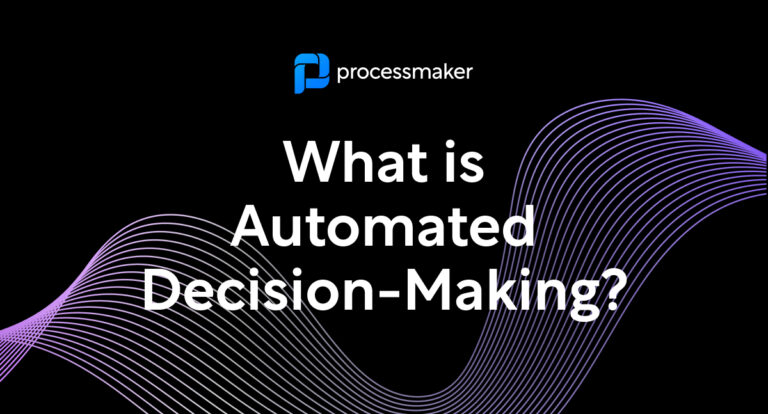Automation digitizes millions of front and back-office tasks, giving a well-documented window into how an enterprise truly runs.
However, this treasure trove of data accumulates in many organizations with little interest in extracting its insights.
Now, the trend is shifting.
Instead of process performance data languishing in the dark corners of virtual storage rooms, analysts and stakeholders are shining the spotlight on it. Using process mining, organizations can pick apart process logs to tweak and optimize workflows.
What is process mining?
People and automation technologies perform tasks. Process mining systems capture their activities to transform it into event logs. Stakeholders, process analysts, and curious managers can scrutinize these event logs to find better, more optimized routes to acing business goals.
How is process mining helping organizations improve their overall efficiency?
- The question “why are things taking so long?” is usually fraught with best-guess answers—and if the question is posed in a pan-department meeting, blame-casting conjectures.
Process mining eliminates the guesswork, spotlighting precisely where the choke points occur. Whether the culprit is a series of redundant steps or a lagging individual deviating from SOP, you can use this analysis to fine-tune workflows. Process mining can make recommendations not according to hypotheses, but in line with actual process performance.
- Pit an event log against a process model to ensure everything went according to plan. Process mining is a tool analysts can use to QC activities across your entire organization.
- Bolster customer experiences with data-backed insight. You can find out what delays invoice processing so vendors can get paid more quickly. You might identify why you’re continually running over the targeted turnaround time for approving new account applications. By eliminating the guesswork, you can find faster routes to improve customer experiences.
Without an effective process mining strategy, digital transformation initiatives are flying blind. Organizations are unaware of inefficiencies lurking behind their automation workflows and lack the documentation to make change. But, with the right process mining systems in place, you can unearth valuable insights primed to improve how your organization conducts business.
How process mining strengthens your automation strategy
The process mining approach is so effective at ousting inefficiencies, that 47% of businesses are piloting or currently leveraging process mining programs. In an era of increasing automation, where software performs more and more to-do list tasks, the data is readily available for analysis. Here’s how experts are using it to improve their automation strategy.
Reveal remote work roadblocks
The pandemic underscored pre-existing productivity sinkholes and dug new ones. Organizations are using process mining as a remedy for obstacles created by remote work.
Clocking in from personal laptops and connecting to software remotely posed connectivity issues. Unreliable systems forced team members to revert to manual methods just to get things done. Or, they used a hybrid of software, whereas a single app was sufficient at the office. Process mining is a helpful tool for detecting issues related to working from home and helps patch them up before they degrade company reputation or revenue.
Detect deviations before they snowball into larger issues
Process mining tracks the automations that zip through your organization, but employees also perform a variety of aimless or uncharted tasks that fly well under the radar.
Trudging through manual tasks in programs like Excel, email, Slack—even equations plugged into the calculator app—can slow the pace and toy with company objectives. By combining task mining, a tech that catches tasks like these, you can perform more robust and accurate analysis.
Build stronger AI models
If you’re using artificial intelligence tools in your automation strategy, process mining is a must-have. AI is a hungry technology. It feasts on a robust store of patterns. If you’re feeding it with hypothesized scenarios or faulty data sets, you’re going to generate models just as sour. By serving it a multitude of actual situations in real-time, AI can generate higher quality results with a clear picture of true-to-life performance.
Develop a more iterative mindset
Business process management (BPM) is not a set-it-and-forget-it practice. You should view every workflow as a testable prototype to be continually evaluated once it’s released into the wild. Just as inventors like James Dyson tinkered with hose diameters and suction flows to produce 5,127 prototypes before landing on the multi-billion dollar Dyson vacuum, process mining helps you continually manipulate discrete elements to find the best approach.
Deploy digital twins
Platforms that best foster this iterative approach take a few tricks from the NASA playbook: digital twins. During the Apollo era, NASA started a groundbreaking trend—they built an earthbound back-up of every piece of equipment they sent hurtling into outer space. It’s how aerospace engineer Ken Mattingly was able to conduct the power-up simulations in Houston that ultimately saved the crew aboard the ill-fated Apollo 13 mission. He had an exact replica to tinker with methodically.
Digital twins are the cornerstone of effective process mining. We can build virtual mimics of software ecosystems and test incremental small tweaks and nudges without affecting the live framework. Instead of the traditional method of implementing a generic, organization-wide change, digital twins help evaluate and patch more pinpointed holes in the system. They’re sometimes tiny, discrete adjustments that can have a remarkable impact on overall efficiency.
Process mining is an invaluable tool for cataloging automation activities and analyzing their performance for future growth. The practice is on a fiery upswing: experts estimate that the $421.9 million industry is primed to grow to $10.4 billion by 2028. With the right process mining tools in place, your organization can take full advantage of its power, and start chipping away at the $3 trillion in annual losses organizations incur annually due to inefficient processes.





